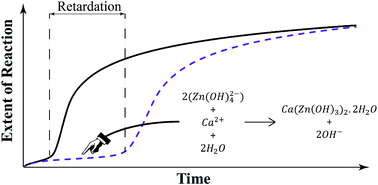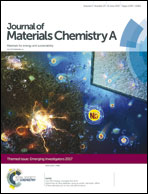Mechanism of zinc oxide retardation in alkali-activated materials: an in situ X-ray pair distribution function investigation†
Abstract
Alkali-activated materials are a new class of sustainable materials that can help supplant highly CO2-intensive ordinary Portland cement (OPC). Chemical admixtures and additives that manipulate the hydration and setting of OPC are readily utilized in the construction industry. However, for alkali-activated materials, the impact of these additives on the evolution of the atomic structure of the binder gel is largely unknown. Here, we utilize nano-ZnO (nanoparticles of zinc oxide), a known retarder for OPC hydration, and investigate its influence on the alkali-activation reaction in high and low calcium alkali-activated materials (slag and metakaolin systems, respectively). Using isothermal calorimetry and in situ X-ray pair distribution function analysis, the mechanism of nano-ZnO retardation in alkali-activated materials is uncovered, revealing that calcium plays a pivotal role in dictating whether nano-ZnO has an impact on the alkali-activation reaction. These results also provide important insight on the ability of slag and metakaolin-based alkali-activated materials to effectively immobilize zinc within the binder gel, which is of relevance to the waste solidification/stabilization community.

- This article is part of the themed collection: Journal of Materials Chemistry A Emerging Investigators


 Please wait while we load your content...
Please wait while we load your content...